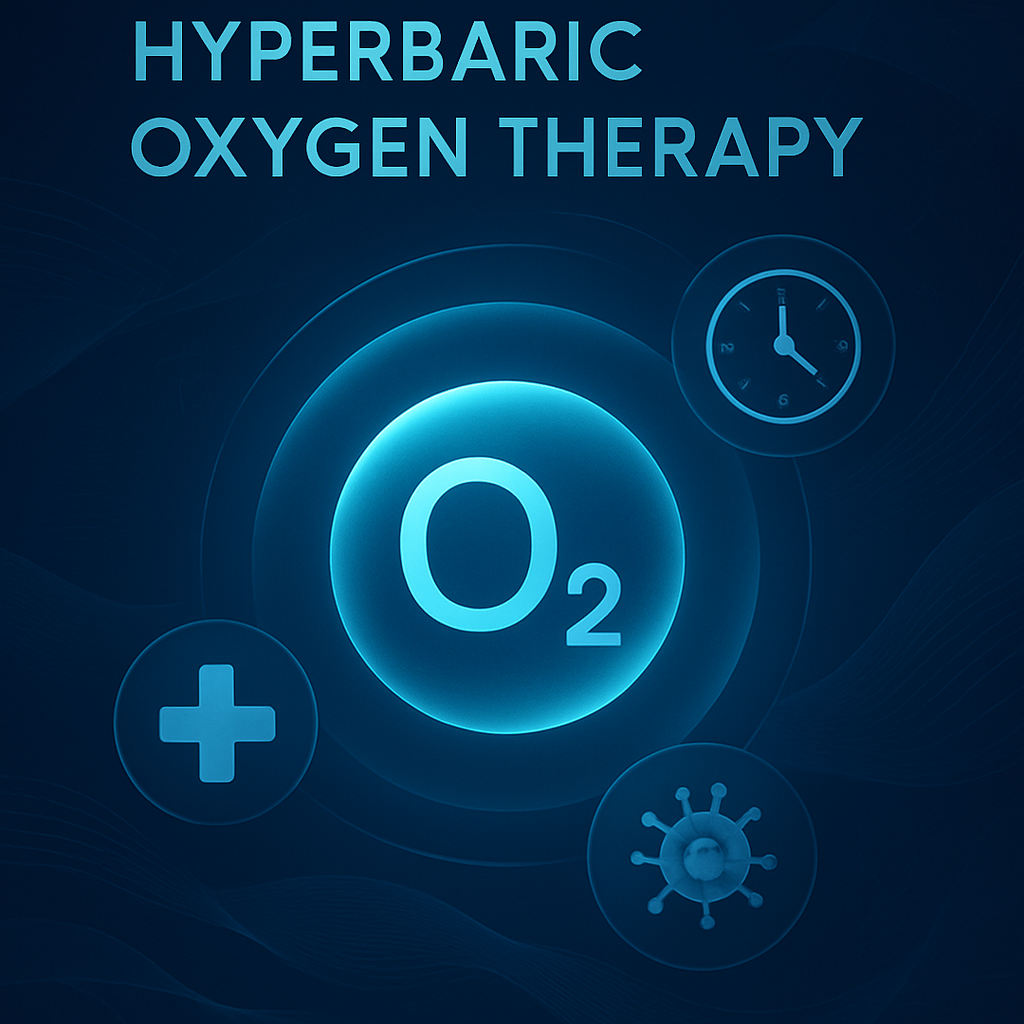Hyperbaric Oxygen Therapy Overview
Hyperbaric oxygen therapy (HBOT) floods the micro-environment with 100% oxygen at 2–3 ATA, elevating tissue pO₂ from the single-digit mm Hg range typical of chronic ulcers to >200 mm Hg—a gradient that enhances the diffusion radius of O₂ and alleviates the rate-limiting step imposed by hypoxia on cellular repair enzymes [Source: Hyperbaric oxygen therapy for wound healing and limb salvage]. At such elevated pressure, prolyl- and lysyl-hydroxylases, enzymes critical for collagen triple-helix stabilization, achieve their peak activity, enabling rapid extracellular matrix deposition by fibroblasts in once quiescent wound beds [Source: Hyperbaric oxygen therapy for wound healing and limb salvage].
Key Biological Mechanisms
HBOT orchestrates several biological processes that facilitate healing. First, repeated 2.1 ATA exposures significantly up-regulate vascular endothelial growth factor (VEGF) expression, promoting robust neovascularization [Source: Hyperbaric oxygen therapy for wound healing and limb salvage] alongside stimulating bone-marrow nitric-oxide synthesis which mobilizes endothelial progenitor cells to the site of injury [Source: Hyperoxia: effective mechanism of hyperbaric treatment at mild-pressure]. Additionally, keratinocyte dynamics are influenced by cyclic hyperoxia; although continuous pressures ≤3 ATA can impair proliferation in vitro, intermittent dives enhance differentiation and epidermopoiesis in full-thickness skin constructs, leading to faster resurfacing in vivo [Source: Oxygen, oxidants, and antioxidants in wound healing].
Clinical Evidence Base
The clinical evidence supporting HBOT is growing in strength. A double-blind randomized controlled trial involving 94 ischemic diabetic foot ulcers (DFUs) found that 52% of limbs receiving 40 sessions at 2.5 ATA healed completely after one-year follow-up compared to 29% in sham controls (p < 0.05) [Source: Clinical guideline—diabetic foot ulcers]. The Løndahl cohort also demonstrated a 2.9-fold improvement in closure rates (63% vs 29% placebo) over the same timeframe [Source: Clinical guideline—diabetic foot ulcers]. Notably, a Cochrane review of 12 trials yielded a risk ratio of 1.42 for DFU healing, highlighting a trend toward reduced major amputations albeit with moderate certainty due to diverse dosing schedules [Source: Hyperbaric oxygen therapy: exploring the clinical evidence].
Regenerative Signaling and Tissue Outcomes
Standard protocols typically involve 90-minute dives at 2.0–2.5 ATA, administered once daily, five days per week, for a course spanning 30–40 sessions, with continued treatment when partial epithelialization becomes evident by session 20 [Source: Clinical guideline—diabetic foot ulcers]. The rapid increase in oxygen tension facilitates matrix synthesis by fibroblasts while enhancing angiogenic signaling via VEGF [Source: Hyperbaric oxygen therapy for wound healing and limb salvage]. Furthermore, HBOT reduces excessive leukocyte adhesion, reprograms macrophages towards the pro-resolution M2 phenotype, and restores the neutrophil respiratory burst critical for combating anaerobic pathogens [Source: The use of hyperbaric oxygen therapy to treat chronic wounds: a review].
Therapeutic Protocols
Therapeutic protocols for HBOT recommend structured sessions to optimize healing efficacy. Adverse events during treatment are typically mild, often including reversible middle-ear barotrauma and transient myopia [Source: The use of hyperbaric oxygen therapy to treat chronic wounds: a review]. Critically, the therapeutic success of HBOT depends heavily on stringent selection criteria that include TcPO₂, macro-perfusion status, and the chronicity of the wound [Source: The use of hyperbaric oxygen therapy to treat chronic wounds: a review]. Achieving robust outcomes necessitates a protocol where HBOT aligns with comprehensive wound management strategies, including strict glycemic control and regular debridement [Source: Hyperbaric oxygen therapy: exploring the clinical evidence].
Safety and Limitations
Adverse events arising from HBOT tend to be mild and self-limiting when operating within protocols designed for wound care [Source: The use of hyperbaric oxygen therapy to treat chronic wounds: a review]. Concerns about pulmonary oxygen toxicity, seizures, and lens opacification remain rare at the prescribed pressures. Economic analyses also reveal that HBOT can be cost-effective in high-risk DFUs when potential reductions in amputation-related costs are factored into overall care models [Source: Hyperbaric oxygen therapy: exploring the clinical evidence].
Perspective for Regenerative Medicine
The future of HBOT appears bright as a cornerstone of regenerative medicine. It acts as a systemic “oxygen drug,” potentiating collagen synthesis, angiogenesis, progenitor-cell mobilization, and immunomodulation—all crucial for tissue repair [Source: Hyperbaric oxygen therapy for wound healing and limb salvage]. Moreover, the synergy of HBOT with next-generation therapeutic modalities, such as bioengineered scaffolds and cell therapies, can enhance overall therapeutic outcomes [Source: The use of hyperbaric oxygen therapy to treat chronic wounds: a review]. This integration paves the way for advanced, precision-based protocols in wound healing, leveraging oxygen not just as a healing agent but as an integral player in enhancing therapeutic efficacy.
